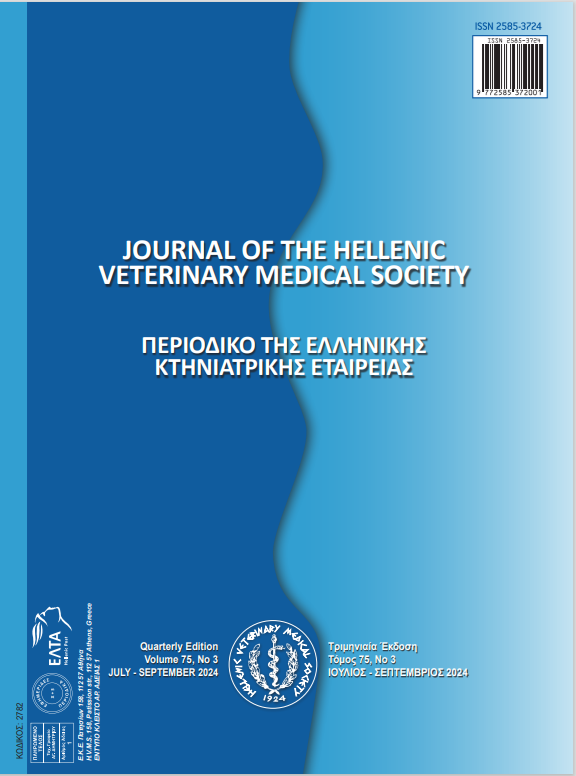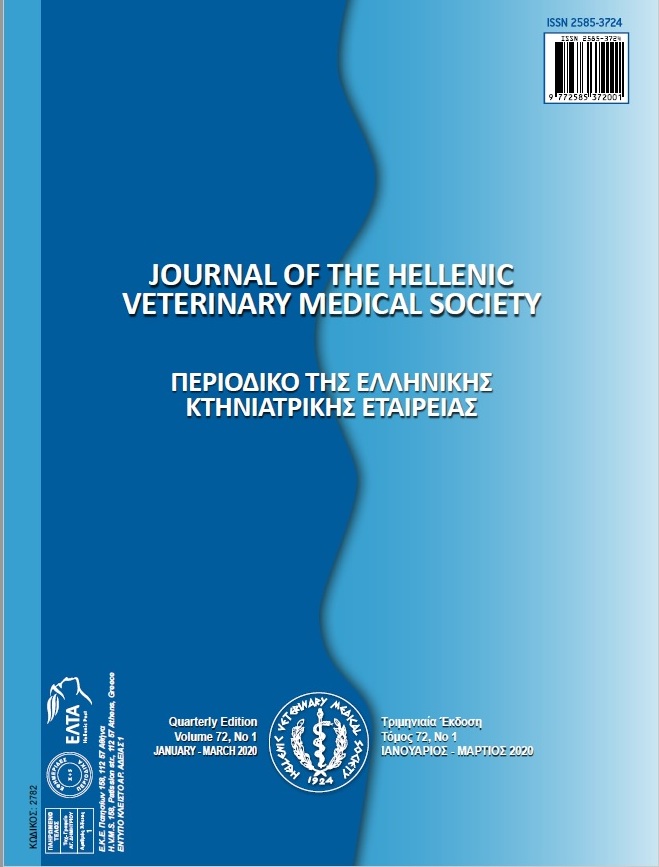Seroprevalence and associated risk factors for Trypanosoma evansi infection in equine in North of Egypt Trypanosoma evansi infection in equine
Resumen
This study determined the seroprevalence of Trypanosoma evansi infection and its associated risk factors in 200 equines across four Egyptian governorates based on CATT/T. evansi. Serological testing revealed T. evansi antibodies in 34.5% of the examined animals, exhibiting notable discrepancies among different governorates. Dakahlia exhibited the highest seroprevalence at 42.4%, while the lowest seroprevalence rate (12.5%) was reported in Gharbia. No significant differences were observed in seroprevalence among age groups or equine species. The multivariate regression analysis model identified pivotal risk factors, wherein the presence of flies increasing infection odds threefold and animals lacking routine insecticide treatment having four times higher odds of infection. Equines in poor health condition displayed double the odds of infection. Surprisingly, a history of venereal disease increased the odds of T. evansi infection. Notably, there were no substantial differences in infection rates based on the disposal of used syringes or prior mange history. These findings provide essential insights into the transmission patterns of T. evansi. Gaining a comprehensive understanding of these identified risk factors is crucial for developing effective methods to reduce the prevalence of T. evansi in populations of equids.
Article Details
- Cómo citar
-
Shorba, M., Shoulah, S., Arnaout, F., & Selim, A. (2024). Seroprevalence and associated risk factors for Trypanosoma evansi infection in equine in North of Egypt: Trypanosoma evansi infection in equine. Journal of the Hellenic Veterinary Medical Society, 75(3), 8065–8072. https://doi.org/10.12681/jhvms.36449
- Número
- Vol. 75 Núm. 3 (2024)
- Sección
- Research Articles

Esta obra está bajo una licencia internacional Creative Commons Atribución-NoComercial 4.0.
Authors who publish with this journal agree to the following terms:
· Authors retain copyright and grant the journal right of first publication with the work simultaneously licensed under a Creative Commons Attribution Non-Commercial License that allows others to share the work with an acknowledgement of the work's authorship and initial publication in this journal.
· Authors are able to enter into separate, additional contractual arrangements for the non-exclusive distribution of the journal's published version of the work (e.g. post it to an institutional repository or publish it in a book), with an acknowledgement of its initial publication in this journal.
· Authors are permitted and encouraged to post their work online (preferably in institutional repositories or on their website) prior to and during the submission process, as it can lead to productive exchanges, as well as earlier and greater citation of published work.




